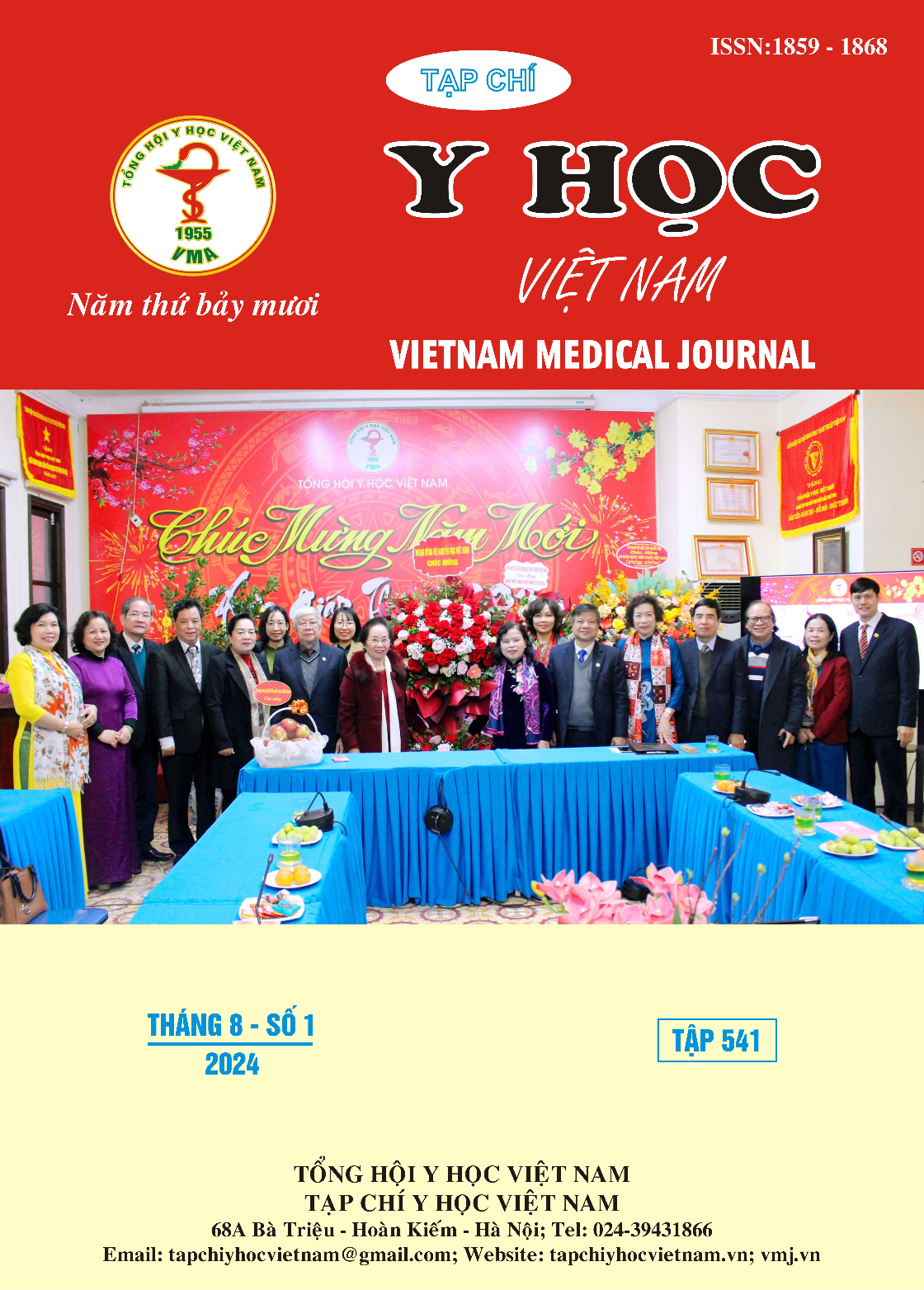TO INVESTIGATE CHARACTERISTICS OF PATIENT USING NON-INVASIVE PRE-IMPLANTATION GENETIC TEST
Main Article Content
Abstract
Objectives: To investigate characteristics of patient using non-invasive pre-implantation genetic test. Subject and methods: This descriptive cross-sectional study was conducted on 66 volunteer couples with indication for PGT-A và NiPGT-A from 2020 to 2023 at the Military of Institute Clinical Embryology and Histology, Tam Anh Hospital, Nghe An General Hospital; embryos were cultured by using single-drop culture process. Results: The mean age of 66 patients was 35,20 ± 4,12; secondary infertility accounts for 86,4%; Main indications for PGT-A and NIPGT-A mainly include consecutive implantation failure (22,72%) and advanced maternal age (59,09%); the mean level of FSH: 6.66 ± 2.01 (mIU/ml), LH 5.87 ± 2.91 (mIU/ml), E2 40.03 ± 34.35(mIU/ml), P4: 0.21 ± 0.19(mIU/ml), Prolactin 185.2 ± 231.22; the mean number of Antral follicles count was 16.27 ± 9.22; total FSH dose used in controlled ovarian stimulation cycle was 2567.42 ± 452.84IU, the mean duration of FSH administration was 10.12 ± 0.87days; the average number of aspirated oocyte corona complexes was 13.82 ± 7.72 complexes. MII oocyte was 10.72 ± 6.4; the mean 2PN zygote was 8.77 ± 5.53; the mean MII oocyte rate was 79 ± 17,4%; the fertilization rate was 82,81±15,96%; the percentage of day-3 cleavage embryo was 93,75± 14,87%, the blastulation rate was 62,23 ± 22,4%. Conclusions: Main indications for PGT-A and NIPGT-A mainly include consecutive implantation failure (59,1%) and advanced maternal age (22,7 the percentage of day-3 cleavage embryo was 93,75± 14,87%, the blastulation rate was 62,23 ± 22,4%.
Article Details
Keywords
single-drop embryo culture, individual embryo culture, in vitro fertilization, niPGT, noninvasive pre-implantation genetic testing.
References
2. Bellver J., Bosch E., Espinós J.J. et al. (2019). Second-generation preimplantation genetic testing for aneuploidy in assisted reproduction: a SWOT analysis. Reproductive BioMedicine Online, 39(6), 905–915.
3. Magli M.C., Albanese C., Crippa A. et al. (2019). Deoxyribonucleic acid detection in blastocoelic fluid: a new predictor of embryo ploidy and viable pregnancy. Fertility and Sterility, 111(1), 77–85.
4. Fang R., Yang W., Zhao X. et al. (2019). Chromosome screening using culture medium of embryos fertilised in vitro: a pilot clinical study. J Transl Med, 17(1), 73.
5. Kuznyetsov V., Madjunkova S., Antes R. et al. (2018). Evaluation of a novel non-invasive preimplantation genetic screening approach. PLoS One, 13(5), e0197262.
6. Huang L., Bogale B., Tang Y. et al. (2019). Noninvasive preimplantation genetic testing for aneuploidy in spent medium may be more reliable than trophectoderm biopsy. Proceedings of the National Academy of Sciences, 116(28), 14105–14112.
7. Franasiak J.M., Forman E.J., Hong K.H. et al. (2014). The nature of aneuploidy with increasing age of the female partner: a review of 15,169 consecutive trophectoderm biopsies evaluated with comprehensive chromosomal screening. Fertil Steril, 101(3), 656-663.e1.
8. Minasi M.G., Colasante A., Riccio T. et al. (2016). Correlation between aneuploidy, standard morphology evaluation and morphokinetic development in 1730 biopsied blastocysts: a consecutive case series study. Hum Reprod, 31(10), 2245–2254.
9. Munné S., Wells D. (2017). Detection of mosaicism at blastocyst stage with the use of high-resolution next-generation sequencing. Fertil Steril, 107(5), 1085–1091.
10. Shilenkova Y.V., Pendina A.A., Mekina I.D. et al. (2020). Age and Serum AMH and FSH Levels as Predictors of the Number of Oocytes Retrieved from Chromosomal Translocation Carriers after Controlled Ovarian Hyperstimulation: Applicability and Limitations. Genes (Basel), 12(1), 18.


